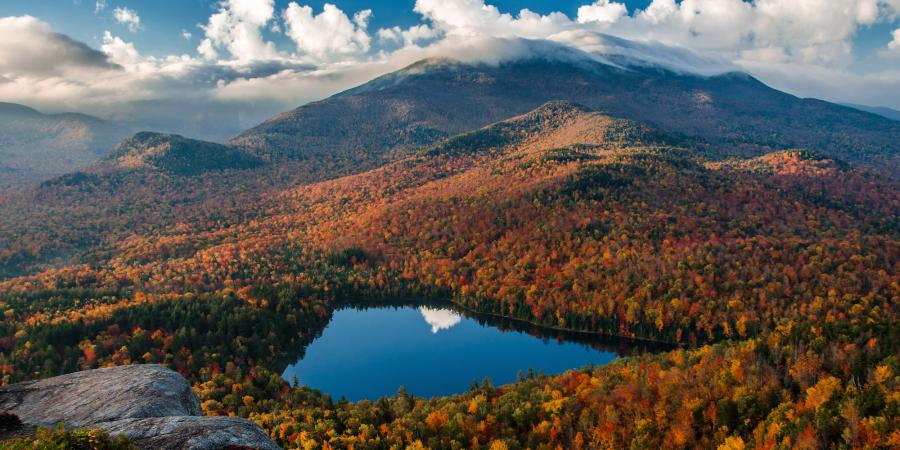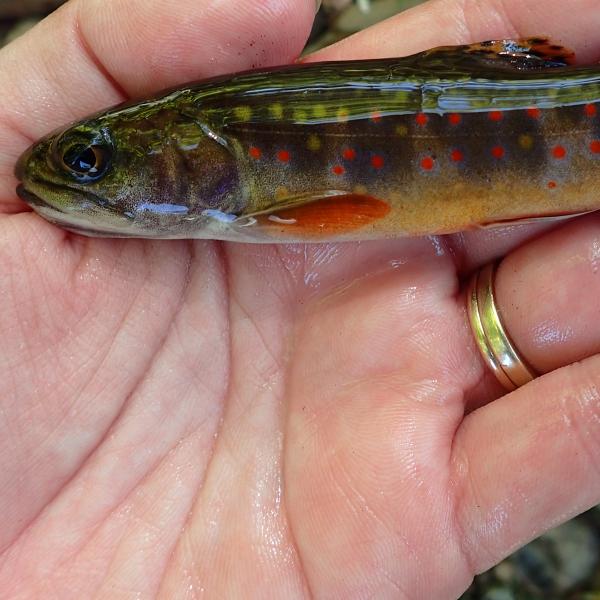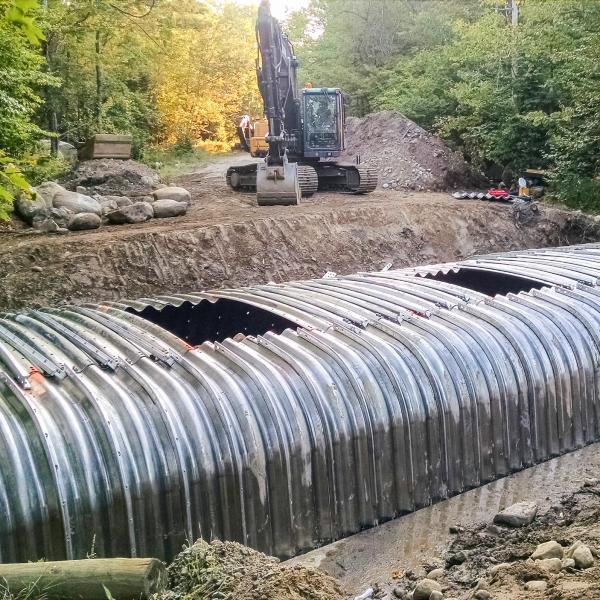Each September and October, we look forward to the changing colors of the trees, shrubs, and plants in our watershed. Our watershed environment shifts gears as the world prepares for winter. It is the breeding season for many wildlife species, including deer, moose, and brook trout. Many birds and insects are migrating south to warmer climates for the winter, while other birds and mammals are preparing to stick around. Resident amphibians and mammals will prepare for hibernation or a slower season, some burrowing underground or in the mud to survive.
Beyond changing into lovely colors, our deciduous trees are preparing for winter, and the process is quite interesting. To avoid the high cost of winterizing their foliage (like coniferous trees), deciduous trees shed their leaves and re-grow them again in the spring. But before they do so, the trees undergo a process to recycle the nutrients that are in the leaves and store them in the twigs and branches for the following spring growth cycle. By doing this, up to fifty percent of the nitrogen and phosphorus is re-absorbed before the leaves drop.

West Branch Ausable River. Photo: Brendan Wiltse
Why do leaves change color? All summer long leaves are little food factories for the trees; photosynthesis is occurring. They use carbon dioxide and sunlight to produce a bi-product of oxygen and glucose, which is used to feed the tree and help it grow. The pigment chlorophyll is present in the leaf. It is most active during photosynthesis and keeps the leaves green all summer long. As the days grow shorter and the nights grow cool, the process of photosynthesis slows down, and thus chlorophyll production nearly ceases. As photosynthesis winds down, the green pigment fades away and the underlying colors are what we see. Carotenoids create the yellow and orange pigments, and anthocyanin is a red pigment. At the same time the twig is growing a new layer of cells that will protect it from water and nutrient loss when the leaf falls off in the wind.
In the Ausable River watershed, our red colors come from red maple, dogwoods, and red and white oak. The brightest orange leaves are on sugar maples, and the burnt oranges are coming from beech and white oak trees. Poplars and birches turn more of a golden yellow color. Oaks and beech trees do not always drop their leaves, but instead they fall when the new leaves start growing in the spring. We also have one deciduous conifer in the watershed, tamarack. Its fine needles become a rich goldenrod color before they drop and fall to the ground. Don Leopold at Suny-ESF created an excellent photographic field guide to fall colors across upstate New York.

Tamarack or American larch (Larix laricina), our deciduous conifer in the watershed. Photo: Brook Taylor
Support our work to protect biodiverse habitats throughout the watershed. Give with confidence today!
At this time of year, beyond thinking about fall leaves we turn to the other parts of the ecosystem that are starting to prepare for winter. Most prominent for us, is the spawning season of brook trout in our watershed. From late September through mid-October in the Adirondacks, our native brook trout have their spawning season. In rivers and streams, they tend to move upstream or into areas with cold springs or upwelling groundwater. In lakes and ponds, brook trout move to gravelly areas, adjoining tributaries, and areas with cool groundwater. The females construct round gravel nests, called redds, using sweeping motions with their tail. Once her redd is constructed, the female waits for a male. When the male arrives, she will then lay eggs, and the male will fertilize them. Males fight with each other for access to active redds with females.
Brook trout (Salvelinus fontinalis) during spawning season. Photo: Carrianne Pershyn
A 2013 study conducted in Quebec, Canada compared the height of the brook trout spawning season to the height of fall leaf change, and their data supports a theory that the timing of brook trout spawning may be synchronized with fall leaf color change. Studies of phenology, or the seasonal timing of events in nature, like this one, are important because they allow us to see the interconnectedness between terrestrial and aquatic processes. Understanding these connections can help us estimate how plants or animals may be affected when weather patterns become altered due to climate change, and disrupt the timing of important ecological events.

Adirondack brook trout (Salvelinus fontinalis). Photo: Larry Master
For brook trout, we need to understand what happens to populations when spawning is delayed or comes earlier each year based on weather patterns. Climate change has been identified as a top threat to brook trout in the Northeast. The Ausable watershed, and other parts of the Adirondacks have been identified as having a high proportion of intact brook trout habitat and also a high probability of brook trout occupancy, even if these streams are faced with increases in summer temperatures between 2 and 6 degrees Celsius over the coming decades. For this reason, the Ausable River Association is working to improve water quality and connectivity in the region, and is taking steps to understand the historical and current status of brook trout in our mostly intact watershed. Our long-term goal, working with a variety of researchers, fishing guides, and river lovers, is to understand, predict, and conserve the future of the brook trout of our Ausable mountain streams.
Story written by Carrianne Pershyn, Biodiversity Research Manager. Top photo by Brendan Wiltse.
Sign-up for our e-newsletter to get weekly updates on the latest stories from the Ausable River Association.






